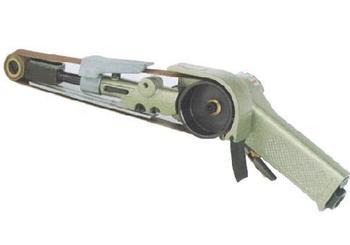 Pneumatic tools are a type of equipment that operates using compressed air, which drives an internal air motor to generate mechanical energy. These tools are typically designed to be compact and lightweight, making them ideal for portable use. This balance between size, weight, and performance is achieved through advanced structural design, high-precision manufacturing, strict material selection, and proper heat treatment. As a result, pneumatic tools are not only easier to handle but also more powerful than many traditional power tools, offering several unique advantages.
First, in terms of functionality, pneumatic tools offer greater versatility. They can perform various types of motion, such as rotation, reciprocation, swinging, and impact. Additionally, speed and power adjustments are straightforward—simply by manipulating the air supply valve or adjusting the pressure regulator. Pneumatic tools also have a wide range of operating speeds, from 100 rpm up to 70,000 rpm, giving users flexibility in different applications. Compared to power tools, they are generally smaller and lighter while delivering similar or even greater power output. Another key benefit is that they do not overheat during extended use, and if overloaded, they simply stop rotating without causing damage. Once the overload is removed, they resume normal operation without any issues.
In terms of environmental adaptability, pneumatic tools excel in harsh conditions. They are resistant to water exposure, and unlike electric tools, they do not produce sparks, making them safer for use in explosive environments such as coal mines or oil fields. They can operate in extreme weather conditions and are often used in fieldwork due to their compatibility with internal combustion engine air compressors. This makes them ideal for long-term operations and large-scale production lines.
From an economic perspective, while the initial cost of power tools may be lower, their long-term energy consumption and maintenance costs tend to be higher. In contrast, pneumatic tools require an initial investment in an air compression system, but they are more cost-effective over time. Their lighter weight also reduces user fatigue, leading to increased productivity. Overall, pneumatic tools provide a more efficient and reliable solution in many industrial and professional settings.
Pneumatic tools are a type of equipment that operates using compressed air, which drives an internal air motor to generate mechanical energy. These tools are typically designed to be compact and lightweight, making them ideal for portable use. This balance between size, weight, and performance is achieved through advanced structural design, high-precision manufacturing, strict material selection, and proper heat treatment. As a result, pneumatic tools are not only easier to handle but also more powerful than many traditional power tools, offering several unique advantages.
First, in terms of functionality, pneumatic tools offer greater versatility. They can perform various types of motion, such as rotation, reciprocation, swinging, and impact. Additionally, speed and power adjustments are straightforward—simply by manipulating the air supply valve or adjusting the pressure regulator. Pneumatic tools also have a wide range of operating speeds, from 100 rpm up to 70,000 rpm, giving users flexibility in different applications. Compared to power tools, they are generally smaller and lighter while delivering similar or even greater power output. Another key benefit is that they do not overheat during extended use, and if overloaded, they simply stop rotating without causing damage. Once the overload is removed, they resume normal operation without any issues.
In terms of environmental adaptability, pneumatic tools excel in harsh conditions. They are resistant to water exposure, and unlike electric tools, they do not produce sparks, making them safer for use in explosive environments such as coal mines or oil fields. They can operate in extreme weather conditions and are often used in fieldwork due to their compatibility with internal combustion engine air compressors. This makes them ideal for long-term operations and large-scale production lines.
From an economic perspective, while the initial cost of power tools may be lower, their long-term energy consumption and maintenance costs tend to be higher. In contrast, pneumatic tools require an initial investment in an air compression system, but they are more cost-effective over time. Their lighter weight also reduces user fatigue, leading to increased productivity. Overall, pneumatic tools provide a more efficient and reliable solution in many industrial and professional settings.Guangdong Kinen Sanitary Ware Industrial Co.,Ltd. , https://www.kinengroup.com
